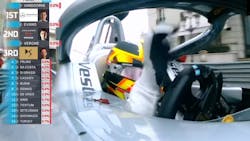This video is part of TechXchange: Formula E Racing
You can watch the full Formula E Round 6 of the World Championship race at the Monaco E-Prix or check out the highlights (above) from ZF and Mahindra Racing, which we have been following. You can find other video highlights on Mahindra's YouTube channel. The highlights are narrated by Performance Director Josef Holden. He breaks down the weekend's sessions and results.
Of course, if you want to see just the results, you can check out the figure below. What I really wanted to talk about here is how well the teams perform because the end result is to cross the finish line with essentially a dead battery or zero usable power left.
Running out of power is not something one would want to do with daily driving, but this is racing. The challenge with Formula E is that each driver is given a limited amount of power. Though regeneration is a requirement in a Formula E race, so is judicious use of power that's provided via "attack mode."
Each car also gets a pair of attack-mode boosts. This extra power is only available for a limited time once enabled. Drivers must take the car over a specific area on the track to enable it. The extra power is available during that timeframe, but it doesn't stick around once the time period expires. The challenge is that the enablement essentially slows down the car. Consequently, there's a downside in addition the upside. Also, the power limitations from the driver's standpoint is actually controlled by computer rather than actual limitations from the battery.
One might think that this power management is something that could be handled by an on-board computer. However, limitations on sensors, etc., placed on the cars by race management makes real-time management a bit more complex for teams. Unfortunately, this is something that tends to be hidden from the fans, but things like the attack mode are apparent to watchers.
See more videos/articles in TechXchange: Formula E Racing

